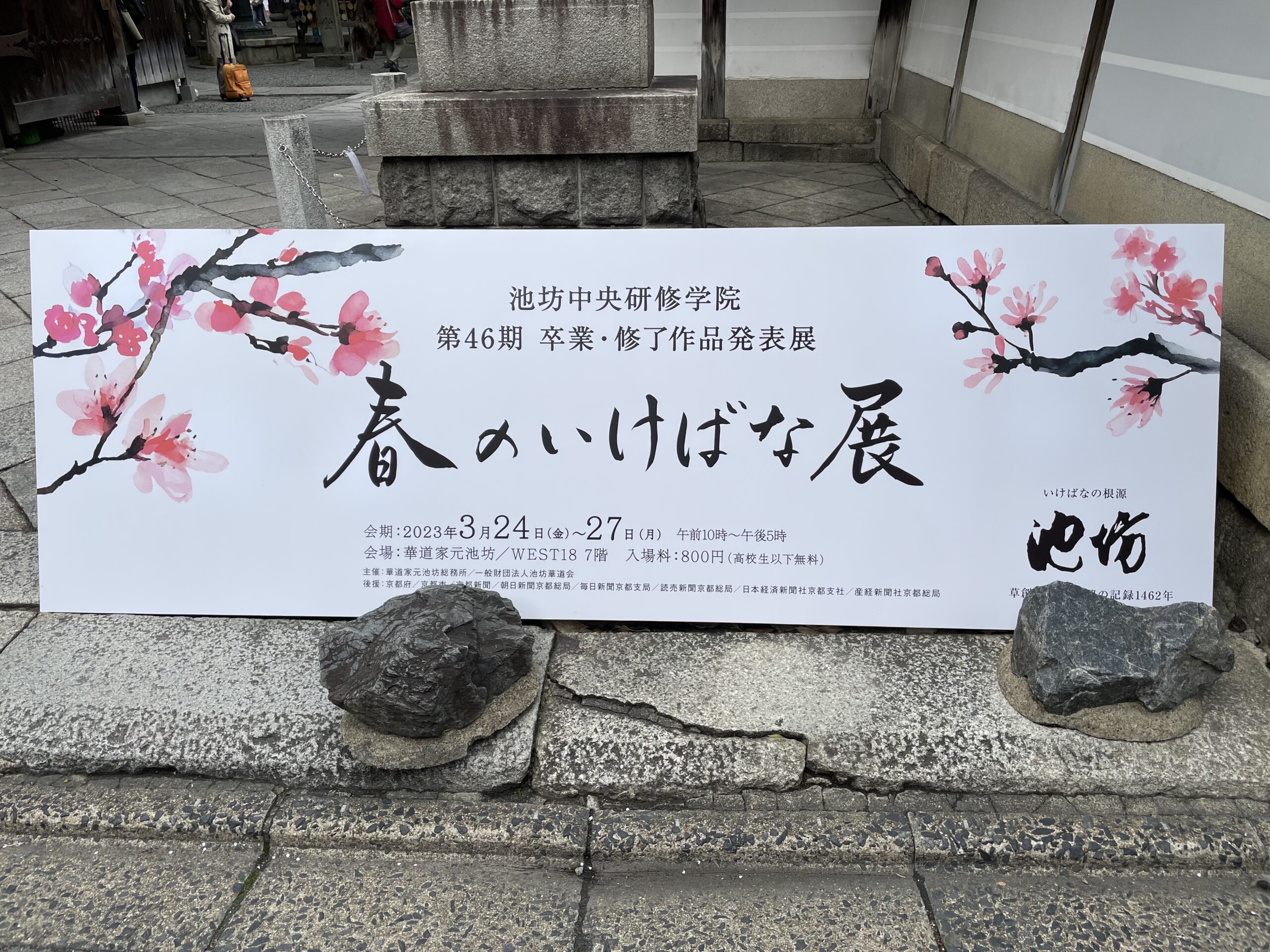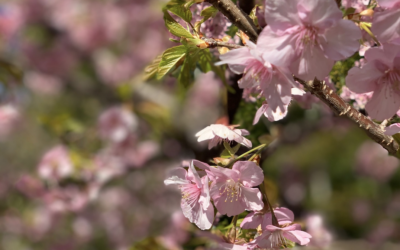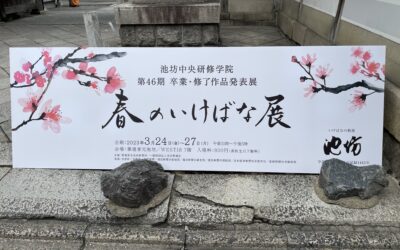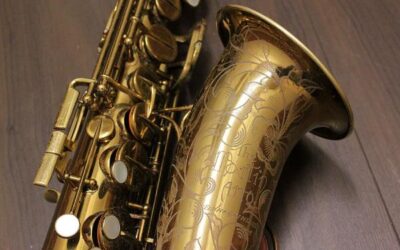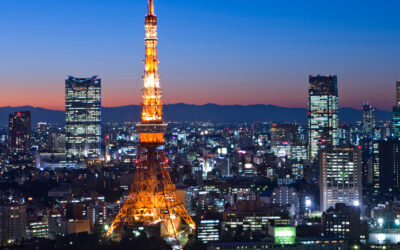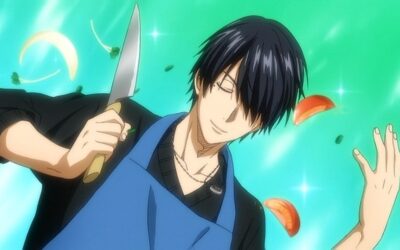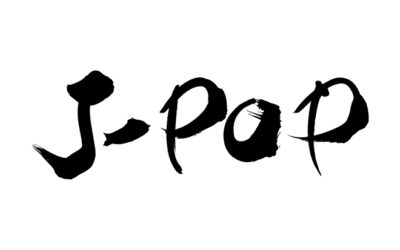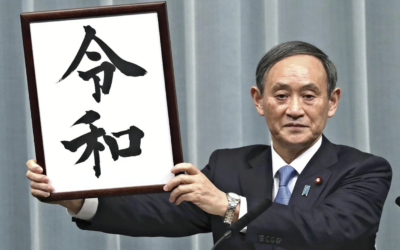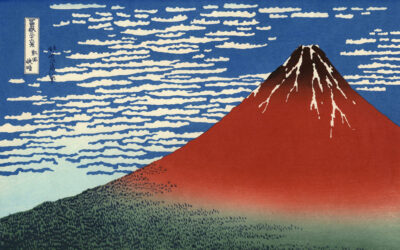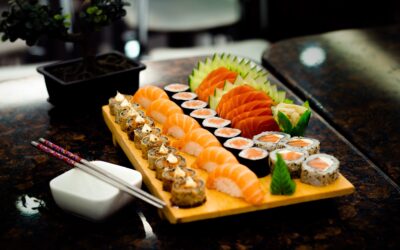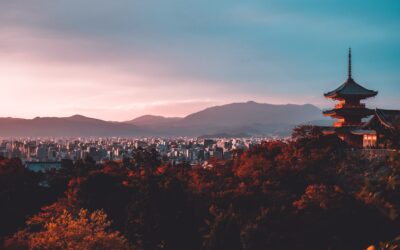Spring arrives with many flowers in bloom after cold winter. At the center of Kyoto in March, many Ikebana creators try to make another flower bloom to express what they have ever achieved.
Ikenobo Central Training Academy Festival
The Best Educational Institution of Ikebana in Rokkakudo, Kyoto
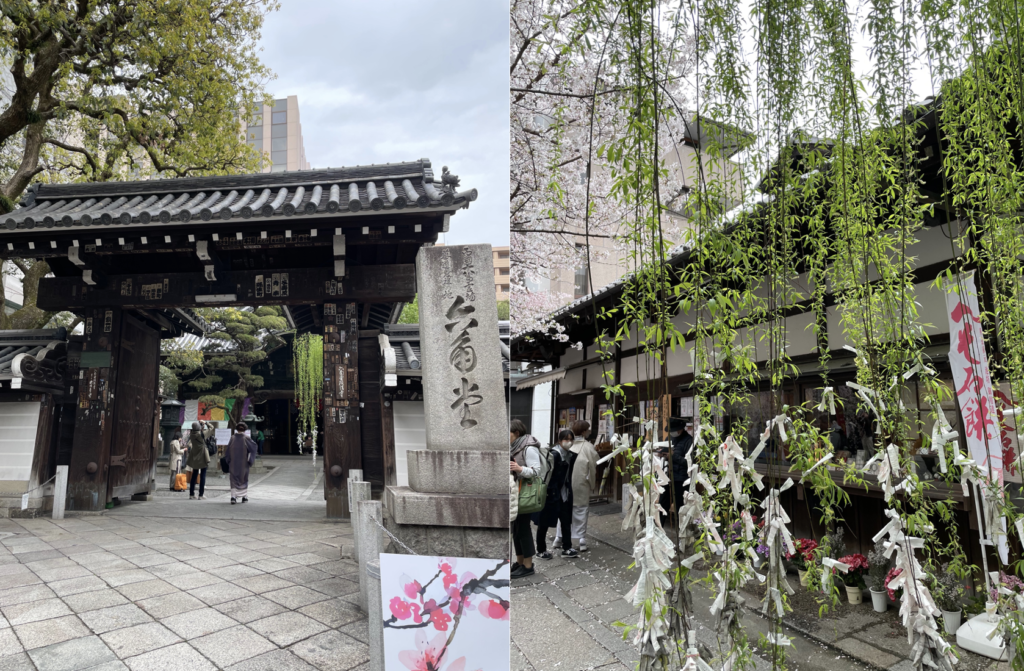
25th Mar. 2023, Rokkakudo, Kyoto. The Left picture is the Gate, and the Right one is the Garden.
Ikebana is called “Kado” and is one of the most representative performing arts of Japan, just like the martial arts “Budo” and the tea ceremony “Sado”. Ikenobo(池坊) is the origin of ikebana and is the oldest one among the “Iemoto(家元)” which has inherited its spirit and techniques. In 1977, Ikenobo established the Central Training Academy with the aim of furthering the progress and development of ikebana in Rokkakudo.
In recent years, many traditional cultures of Japan have become more and more difficult to be maintained and inherited. The main reason is said that is lack of the inheritors, but another major one is that those cultures have not been able to meet the demands of new eras. The Ikenobo was quick to recognize the changing demands accurately and has continued to create their new style flexibly while maintaining their past styles.
As a result, they have the largest number of members among the Ikebana’s Iemoto. In addition, they are successful to have a lot of international fans, some of which come to Rokkakudo as students every year.
Ikenobo Unique Education System Available to Workers
Ikenobo has education systems designed to make it easier for people who normally work to learn the Ikenobo-Kado. At first, the Ikenobo has organized chapters and groups not only in Japan but also in other countries and regions around the world, Argentina, Australia, Brazil, Canada, East Asia, East Europe, Jordan, New Zealand, South Asia, South Europe, Southeast Asia, United States, West Asia, and West Europe(link). You can contact directly to them which you are interested in.
Furthermore, those who wish to study more deeply can try to study at the Central Training Academy, which teaches the comprehensive theoretical system of ikebana and its practical techniques based on its unique step-up education system. This system has 4 curriculums with several classes and schedules, allowing students to choose them according to their ability and Kado position rank.
Final Presentation and First Public Exhibition for Graduates
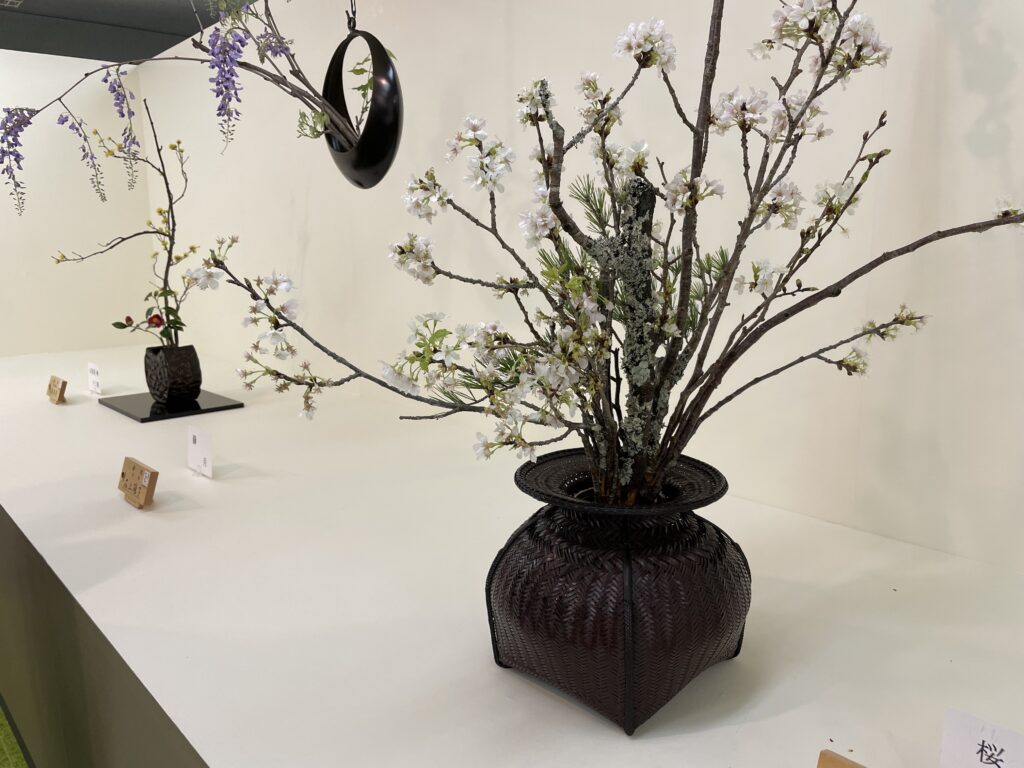
When they complete the entire curriculums and are ready to graduate, they get a special privilege, which is to exhibit their Kado works at the Ikenobo central training academy festival at the end of every March, once a year.
This exhibit in the Rokkakudo is open to the public. A lot of Kado artists from all over the world come to the exhibition to evaluate their works, and some tourists to Kyoto come to enter this venue during their trips. Therefore, their works, along with those of other professors and the head of Ikenobo, attract a great deal of attention during this period of exhibition.
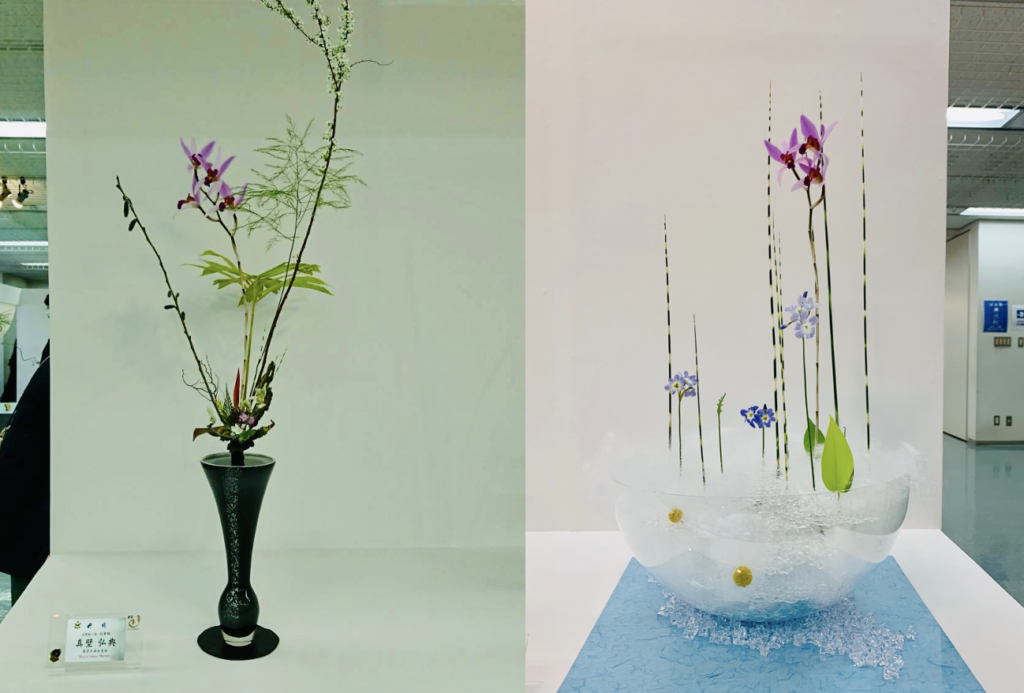
Grand Prix 2 Kado Works by 2023 Graduates
Incredible Ikebana Works in Spring 2023
In this exhibition, incredible Kado works by some professors and the Ikenobo-Iemoto were displayed in various buildings of Rokkakudo, making the spring of Kyoto more colorful. This section introduces the Ikenobo-Kado genre along with the wonderful works on display in this exhibition with quotes from their descriptions.
Rikka (立花)
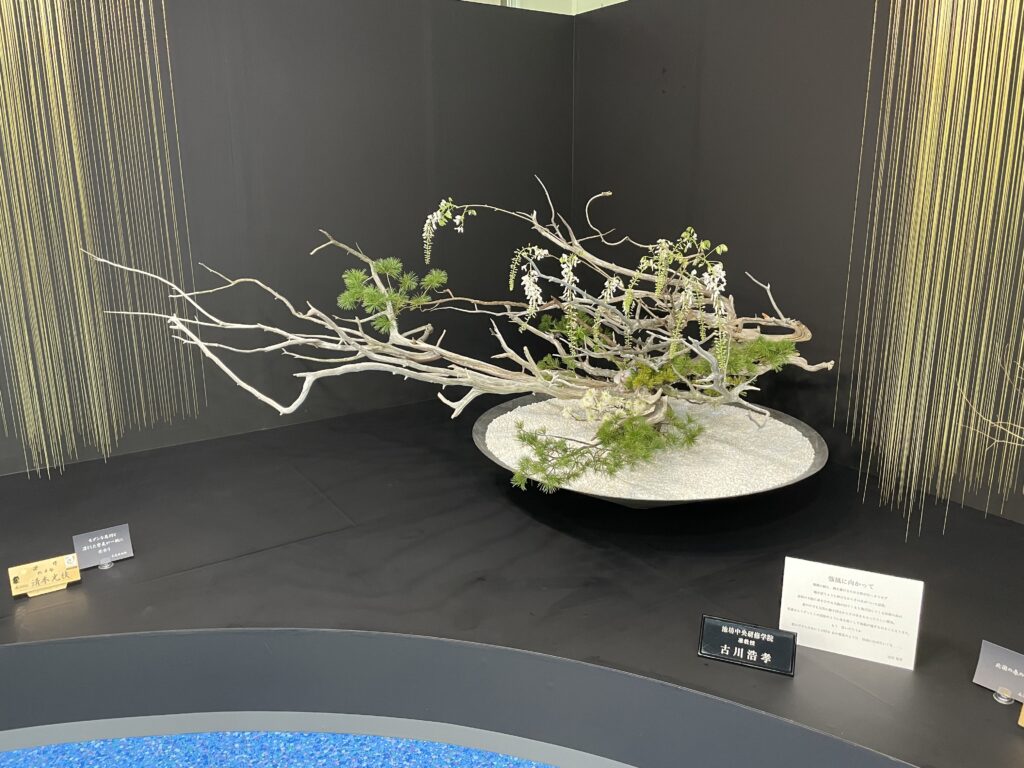
Created by Prof. Furukawa
Established in the Muromachi period, Rikka is the oldest style of Ikebana. By using various branches and plants Rikka suggests the beauty of a whole natural landscape.
Blooming flowers and lush greenery in all four seasons do not exist in isolation. Flowers bloom at appropriate times and trees and grasses put down roots where they are supposed to only when soil, sunlight, and water are available. It can be said that the beautiful natural landscapes we see are the result of the harmony of all things.
In Rikka, trees symbolize mountains, while grasses and flowers suggest water. A natural landscape is expressed in a single vase. Indeed, all things in nature are reflected. Rikka is important through the harmony of trees and plants to come to know the laws of nature.
The Rikka has two styles: Rikka Shofutai with traditional form, and Rikka Shimputai with no set form.
Shoka (生花)
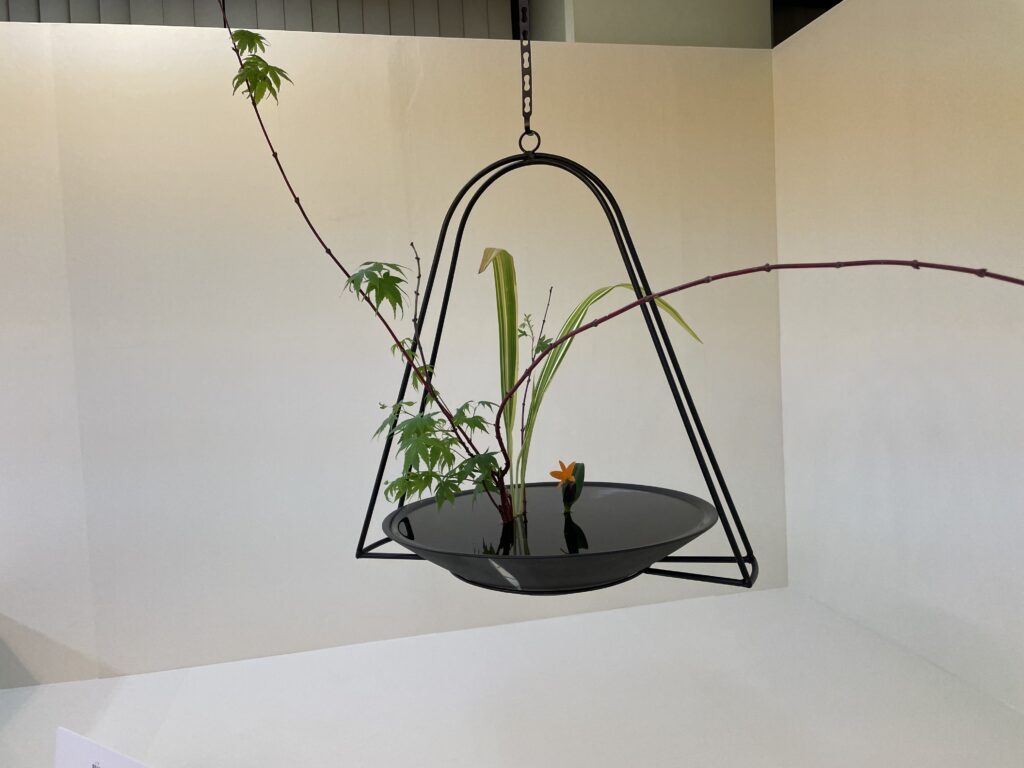
Created by Prof. Tsuchiya
Shoka is a style formalized in the late Edo Period. By using from one to three kinds of floral materials shoka expresses the living form of plants rooted in the soil and growing upward.
While Rikka seeks beauty in the harmony among plants, the Shoka focuses on the shussho (inner beauty of a plant) that suggests a plant’s life. The Shussho is the unique character of each plant, beauty discovered in the various growing forms of a plant as it makes every effort to live. Based on this inner beauty, the life of plants is elegantly and gracefully expressed arranged in a single vase.
The Shoka has two styles: Shoka Shofutai with traditional form, and Shoka Shimputai with no set form.
Free Style (自由花)
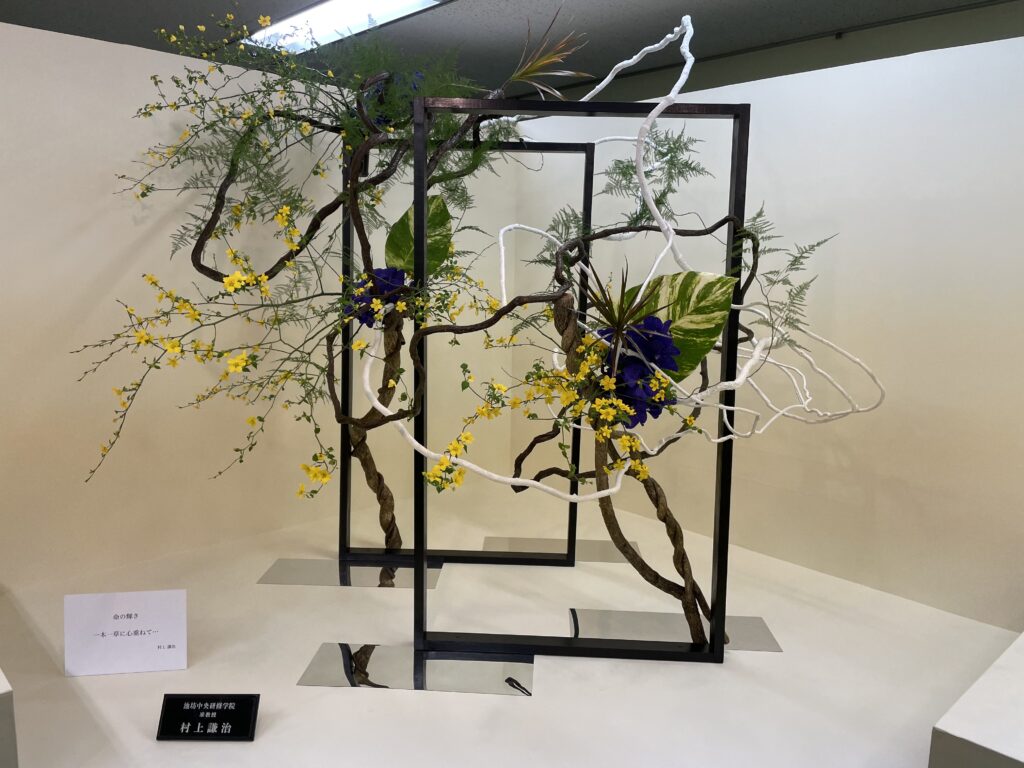
Created by Prof. Murakami
Free style is a style with no set form, literally arranged freely from observing the shapes and textures of plants. A wide range of expression is possible in free style.
Recent Ikebana is appreciated not only in living spaces but also as display for decorating event spaces, stages and show windows. As a style arranged freely and without set rules, free style is utilized more and more as new Ikebana for decorating with flowers in spaces and situations different from the Tokonoma, where Rikka and Shoka were originally displayed.
The Next Iemoto’s Work also Exhibited
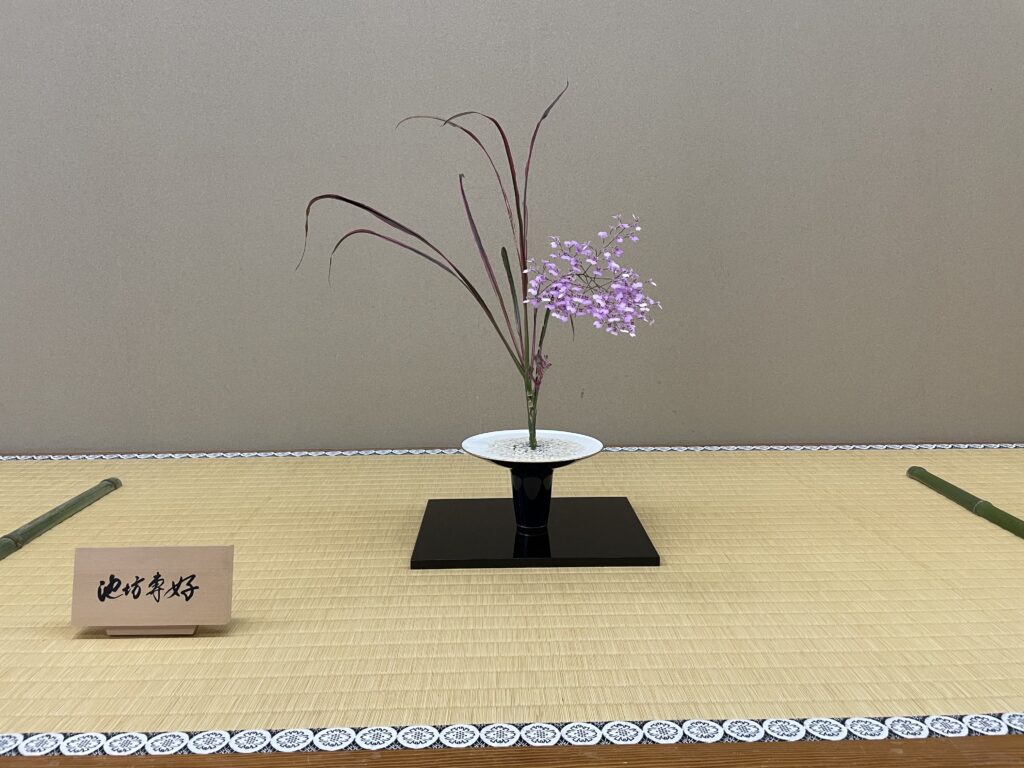
Created by Senko Ikenobo, Next Iemoto

